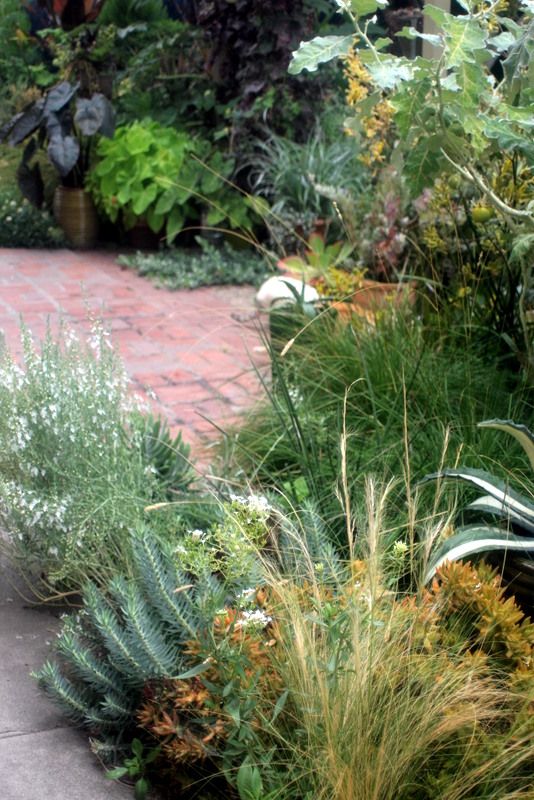Emily Green, in the September 9, 2011, edition of The Los Angeles Times, discusses many of the hidden costs related to keepings lawns, including the health risks to those often hired to maintain them in Southern California, in her piece entitled “The health of our gardens, and the people who tend them,” found here.
In discussing the health risks faced by landscape workers, the “mow-and-blow” crews:
“Studies conducted on farm laborers working with the same suite of pesticides used in lawn care suggest that home garden teams might also be more likely than the general population to develop the pesticide-related issues of non-Hodgkin’s lymphoma and having children with birth defects…The status quo is clearly unacceptable. Yet here we trip into the biggest pitfall facing a transition from turf to more environmentally beneficial complexes of trees, herbs, shrubs, succulents, meadow grasses (not turf) and flowers.
“As obvious as it sounds, to make the change, Southern California’s homeowners would have to care as much about the land around their homes as the house itself. This would mean learning how to garden themselves, or paying skilled gardeners, not mow and blow teams.”
And to her credit, Ms. Green doesn’t underestimate the difficulties homeowners face in transitioning from relatively easy-care lawns to more complicated, diverse landscapes:
“It seems clear that homeowners and residential mow and blow crews can’t effect necessary change alone. We need the entire grounds maintenance industry, along with landscape design and public expectations of what constitutes a nice yard, to change. We need civic leaders who understand that a healthy Los Angeles cannot afford lawn as a default landscape.”
Personally, I love the surge of plants pressing in all around, the sense of being immersed in a landscape, and would never keep a lawn, but I fully appreciate the difficulty losing the lawn presents for many homeowners. Practically speaking, it’s not an easy thing to accomplish, especially if you’re not that interested in plants and gardens to begin with.

Of course, there are entrenched interests quite happy with the status quo. Catherine McLaughlin, with the garden design firm of Rodgriguez & Satterthwaite, took this photo on a local Los Angeles freeway last week. I’ve seen this truck around town too.

Emily Green blogs at Chance of Rain.

A more apt signage for this truck..” The Drought is Annual” .
While researching my recent post on nutrient run-off from lawns, I heard about the health risks of living adjacent to golf courses. Seems there is some indication of higher cancer rates among people and there were some anecdotal, but startling incidents of premature pet death. Grass should not be so scary.
Fact of the matter is, many people around the world sacrifice their health to make a living. Often that is why the job exists in the first place–because someone else doesn’t want to damage themselves, and can afford to pay someone else to do it. Those mow-blow guys are supporting themselves and raising families on that work (good!) while slowly destroying their health (bad!).
I think the gas-powered leaf blower to a great extent created the vast army of immigrant mow-blow guys by enabling a small team, or a lone guy, to groom enough yards per day to make a living without a lot of training or education. I think Greene’s post could have gone a little further, at least to point out the complex whole of the lawn care economy: from corporate profits off chemicals to a surge in illegal immigration…
Kathy, yes, a little truth in advertising wouldn’t be amiss once in a while.
Les, I do wonder about fertilizer use in general, not just for lawns. I stick to basically compost and have given up trying to feed huge summer bloom displays. But maybe it’s the nitrogen for grass growth that is the biggest offender with algae bloom in waterways, etc.
Hoov, I think EG was focusing on just a couple aspects of this complex subject. The ramifications go off in so many directions. I like your economic input — read your comment on Noel Kingsbury’s blog yesterday.